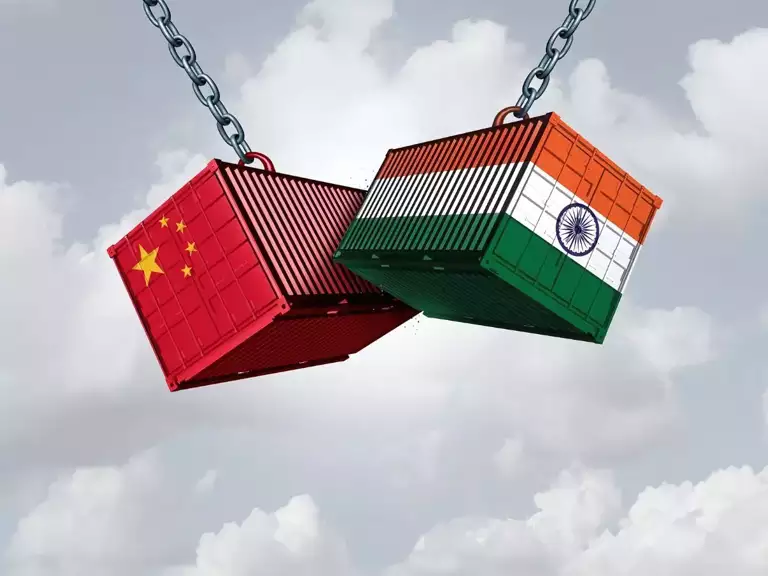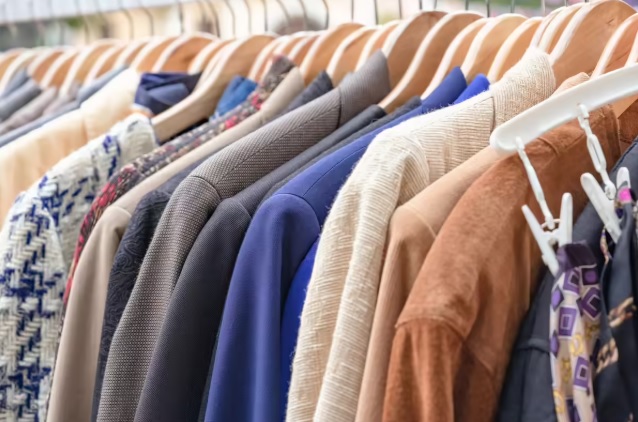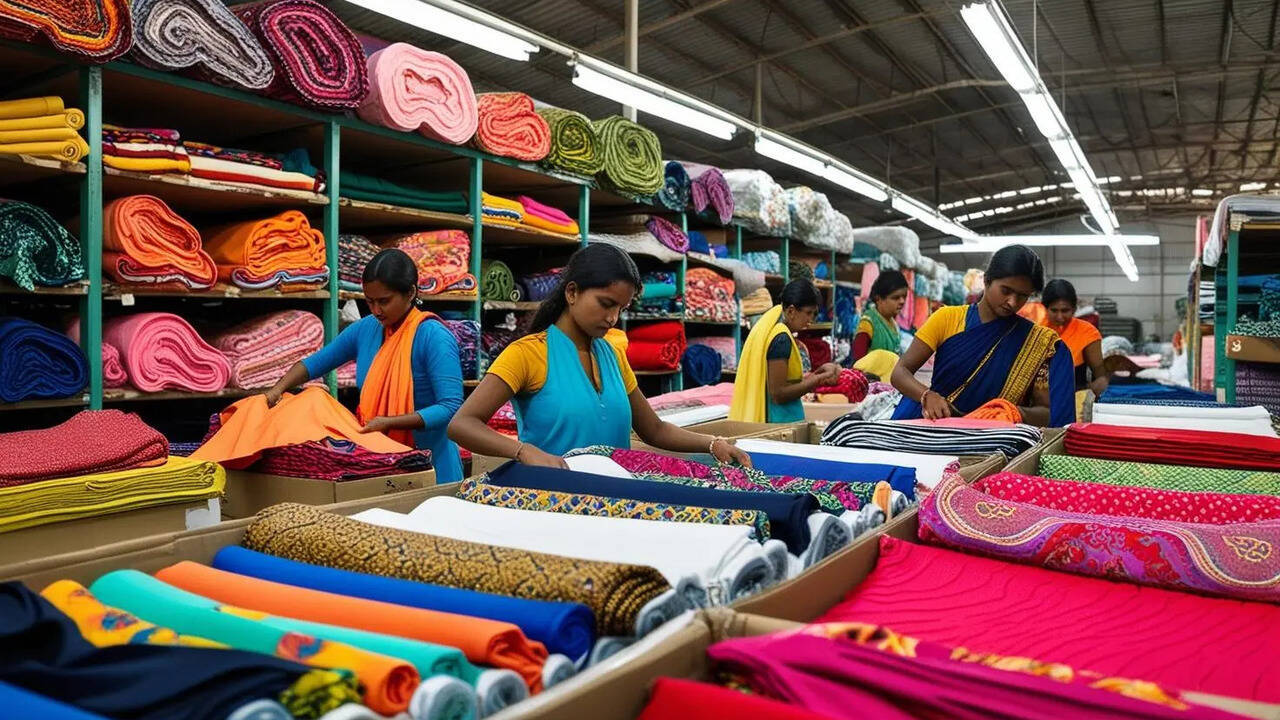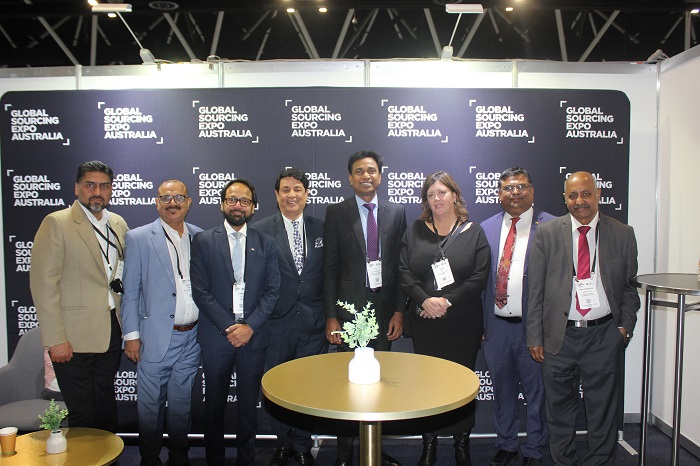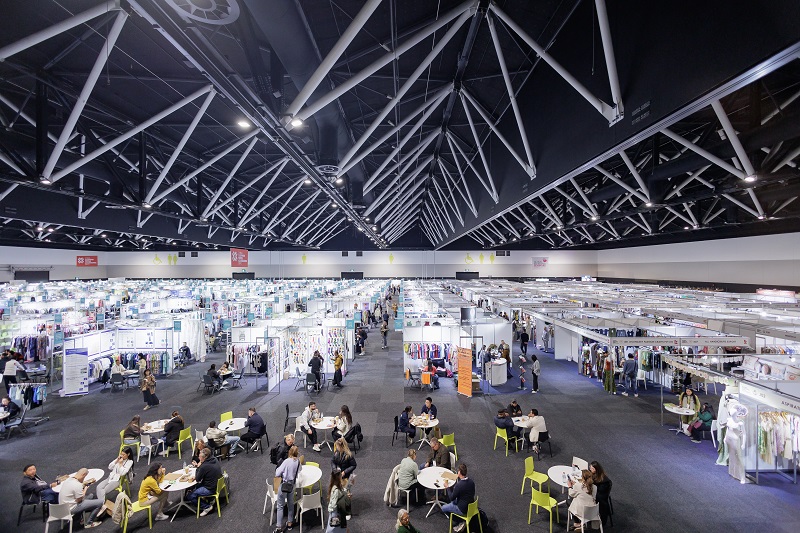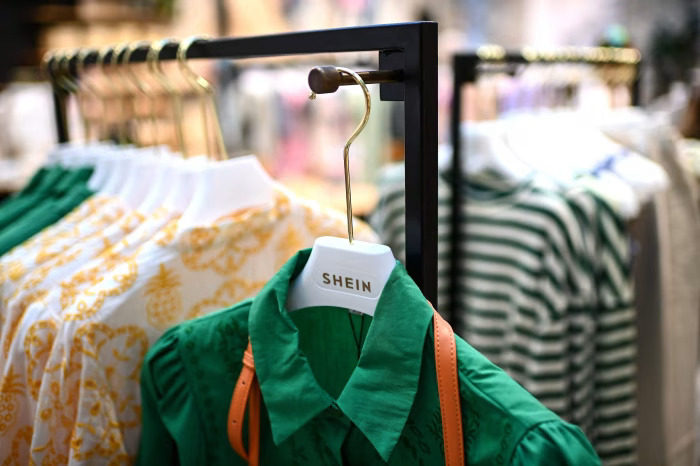FW
Vietnam's central bank is letting the country’s currency dong to fall against the dollar, hoping to close the gap between its reference rate and market forces and tap the export benefits due to a softer currency. The State Bank of Vietnam on Monday moved its reference rate for the dong from 21,890 to the dollar to 21,896, announcing that it would begin setting the rate daily by taking into account the movements of the euro, dollar, yen, yuan and other currencies. Cuts have continued nearly every day this week, mirroring a slide by China's currency.
The new policy steps away from the dong's de facto peg against the dollar. The reference rate previously has remained fixed for lengthy periods, with the central bank ensuring that the currency's value stays within a certain trading band, usually a few per cent. The shift comes after months of pressure for a weaker dong, fueled by factors including speculation around US interest rate hikes. The central bank in August widened the allowable deviation from the reference rate to 2 per cent from 1 per cent. That was followed by another expansion to 3 per cent later in the month, alongside a cut to the rate itself.
The conclusion of negotiations on the Trans-Pacific Partnership trade pact in 2015 also gave support for a weaker dong. Vietnam is expected to reap the benefits of TPP membership as its textile industry ramps up exports. A stable currency will boost the country's appeal further as it tries to position itself as a key market in Asia.
A global framework agreement (GFA) signed between IndustriALL Global Union and Swedish clothing company H&M has been an accelerator in reinstating sacked workers at garment factories in both Myanmar and Pakistan just a couple of months after it came into force.
The GFA, which was signed in November 2015, serves to protect the labour rights of 1.6 million workers in H&M’s global supply chain. In Myanmar, the GFA was key to getting trade unionists back to work, as well as achieving trade union recognition at the Jiale Fashion factory in Yangon. Eight union leaders were sacked at the garment factory in October 2015, leading to a month-long strike. The Confederation of Trade Unions in Myanmar (CTUM) reported the dispute to IndustriALL’s South East Asia regional office, which invoked the GFA with the H&M Sustainability offices in Yangon and Sweden, especially as the case raised issues on freedom of association.
H&M Sustainability then pushed for dialogue through both their local office in Yangon and Jiale Fashion’s owners in Hong Kong. H&M Sustainability, IndustriALL and CTUM were involved throughout the process until an agreement was reached between workers and the factory. As well as reinstating the dismissed workers, the factory agreed to recognize the factory trade union, the Jiale Basic Labour Organization, which is affiliated to CTUM and IndustriALL through the Industrial Workers Federation of Myanmar (IWFM).
In November 2015, 88 workers at the Denim Clothing Company (DCC) factory in Pakistan were sacked for demanding their rights. As part of the newly signed GFA with H&M, both parties worked to bring the 88 workers back to work through joint negotiations with IndustriALL Pakistani affiliate NTUF and the local management at Denim Clothing. All workers were reinstated with full pay from 26 November, the date they had been fired.
www.hm.com
Industry sources claim that China’s Ministry of Industry and Information Technology (MIIT) may soon launch a development plan for the textile industry. The plan is expected to be unveiled during the first half of this year - the 13th Five-Year Plan period (2016-2020). The measures may include focus on high-end production, textiles for automobile use, implementation of recycling system for waste textile and developing Xinjiang Uygur Autonomous Region as a major textile base by 2020 to provide easy access to the western countries.
Despite all reports and studies pointing out how falling currency, rising raw material and labour costs in China are impacting the country’s apparel market, according to the forecast made by the Euromonitor, the country will exceed the United States to become the world’s largest apparel market by 2019.
The report suggests that annual apparel sales in China will reach $333,312 million in 2019, an increase of 25 per cent from $267,246 million in 2014. While in comparison, apparel sales in the United States are estimated to reach $267,360 million in 2019, which is only 3 per cent higher than $260,050 million in 2014.
The study points out that China seems to be an even more competitive apparel market than the United States because no apparel brand was able to achieve a market share more than 1 per cent in 2014 in China, whereas in the United States, market shares of several leading apparel brands exceeded 2 per cent. Moreover, domestic brands overall outperform international brands in the Chinese apparel market.
www.euromonitor.com
The government has rejected claims made by the textile mills seeking subsidy against investments made under the Technology Upgradation Fund Scheme (TUFS) during the black-out period. Industry sources say that the subsidy claims are to the tune of Rs1,000-1,200 crores.
The blackout period is considered to be from June 28, 2010 to April 27, 2011, when the government had stopped fresh sanctions of projects under TUFS, to change it from an open-ended scheme to a closed-ended one, and launched the revised scheme only from April 2011. The allocation of a total of Rs17,822 crores approved by the Cabinet Committee on Economic Affairs (CCEA) last week for subsidy payments under both the old and the new schemes have not considered claims made for investments made during the black-out period.
The Cabinet announced a new Amended Technology Upgradation Fund Scheme (ATUFS) last week and approved Rs12,671 crores for its “committed liabilities” under the old scheme. It provided another Rs 5,151 crores for subsidy payment under the new scheme (ATUFS) over a period of seven years.
The industry is of the opinion that the government’s decision to not consider the black-out period cases as “committed liabilities” would adversely impact textile mills, which have taken loans to invest in expansion or upgradation and are simultaneously facing low demand from the importing countries.
Texmin.nic.in
Cotton USA signed Brandix Textiles as its first licensee in Sri Lanka, a developing market for US cotton exports. Brandix Textiles is one of Sri Lanka’s largest textile manufacturers and supplies high quality woven finished fabrics to leading global apparel brands.
“Brandix is a top quality fabric and apparel manufacturer with established sourcing partners in the Cotton USA supply chain, so the company is a natural fit for our licensing program,” Cotton Council International (CCI) Executive Director Bruce Atherley said, adding, “Launching a Cotton USA licensee in Sri Lanka will establish a greater presence for US cotton in South Asia and strengthen the U.S. cotton supply chain.”
Brandix Textiles’ Cotton USA license covers 400,000 square meters of 100 per cent US cotton woven fabrics. Brandix currently sources the majority of its greige fabrics from Cotton USA-licensed mills in Pakistan, ensuring the US cotton content and giving them a high quality product. Brandix officially joined the licensing program in December 2015. The company previously participated in the 2013 Cotton USA Supply Chain Marketing Conference in Dubai, which brought together 54 companies under one roof to develop new business opportunities for US cotton. Brandix met with Cotton USA fabric licensees, garment companies, and international brands and retailers at the event, making strong supply chain connections.
Brandix is also a Cotton LEADS partner. The Cotton LEADS program – initiated by Australia and the United States – offers manufacturers, brands and retailers a reliable cotton supply chain solution and confidence that their raw material is responsibly produced and identified.
Cottonusa.org www.brandix.com
After releasing the trading statement for the third quarter with disappointing merchandise sales, Marks and Spencer (M&S) CEO, Marc Bolland expressed his desire to step down from the role. After six years in the position, Bolland will retire this year. Steve Rowe, Executive Director of General Merchandise will now step into Bolland’s role. Marc Bolland will remain CEO and on the Board until the end of the current financial year on April 2, 2016 when he will hand over to Steve Rowe.
Steve Rowe has been with Marks and Spencer Group plc for over 25 years and been a Board Member since 2012. Before joining the Board, he worked in a range of senior positions across the business including director of retail and e-commerce and various positions in general merchandise.
In 2012 he was appointed by Bolland to the executive team as executive director, Food and was appointed to the Board of Marks and Spencer Group. In particularly difficult market conditions Rowe led the Food business to produce 12 consecutive quarters of like for like growth, grow its margin and all its key performance metrics, continue its record of outstanding innovation and set out a path for further profitable growth. In July 2015, he was appointed executive director, general merchandise with a mandate to improve the overall performance of that business, building on the improved design and sourcing capabilities.
www.marksandspencer.com
The United States Patent and Trademark Office recently granted Invista a US patent for bio-derived raw materials technology. The patent is for engineered polypeptides and their related crystal structure details, which are both useful for producing bio-derived compounds such as butadiene and isoprene. The company collaborated with Arzeda to develop the innovations covered by the patent, which was issued on December 29, 2015.
“The work detailed in this patent provides innovative solutions to potentially increase the global supply of bio-derived chemicals,” said Bill Greenfield, President of Invista’s Intermediates Business, adding, “This patent is an example of Invista’s biotechnology research capabilities working together with Arzeda and demonstrates our commitment to developing new bio-derived processes for a range of products.”
Alexandre Zanghellini, Co-Founder and CEO at Arzeda, said, “The issuance of this patent is yet another example of the power of combining Arzeda’s computational protein design technology Archytas with experimental screening to rapidly design synthetic enzymes. With Invista’s expertise in biotechnology and industrial scale-up, we are confident this collaboration will lead to advanced bio-processes for the production of more sustainable industrial chemicals.”
www.invista.com
"With TPP benefitting Vietnam, since it will get duty-free access to the US, Canada and Australia, Gangwar is of the opinion that his ministry along with the Ministry of Commerce is looking at signing FTAs with important markets like the EU, the US, CIS countries, South Africa and Turkey and Latin America, which can provide an edge to Indian exports."
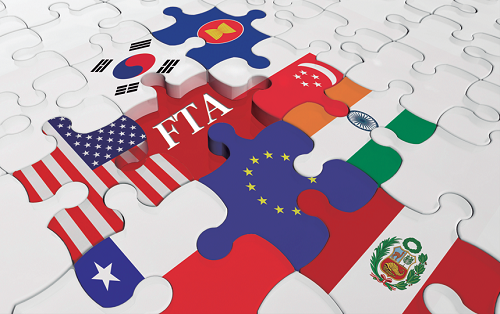
India’s textile and garment exports target of $47.5 billion for 2015-16, with an estimated increase of almost 14 per cent against last year will not be met amid tough global economic conditions. However, textiles minister Santosh Kumar Gangwar is optimistic about India even though the Trans-Pacific Partnership (TPP) will benefit competitors like Vietnam, which will get duty-free access to the US.
Combating competition

According to Gangwar, there has been a decline in textile and apparel exports in the last few months owing to various factors. Now the ministry of textiles has initiated several steps to boost exports such as reduction of excise duty on man-made textiles from 12 per cent to 6 per cent; enhancement of market coverage under the Merchandise Exports from India Scheme (MEIS); upward revision of duty drawback rates as well as value caps; continuation of interest subvention scheme and expanding its scope; and providing working capital at 7 per cent to exporters under priority sector lending.
Of these, the government has taken action on recommendations related to MEIS. For example, duty drawback rates were raised by 2 per cent for textile products in November and interest subvention. With TPP benefitting Vietnam, since it will get duty-free access to the US, Canada and Australia, Gangwar is of the opinion that his ministry along with the Ministry of Commerce is looking at signing FTAs with important markets like the EU, the US, CIS countries, South Africa and Turkey and Latin America, which can provide an edge to Indian exports.
Wage is a wide-spread issue among most textile and apparel industries of countries exporting to the US, EU and other nations. To make India’s labour laws flexible, the textiles ministry has forwarded proposals include raising over-time limit for employees from 50 hours a quarter to 100 hours; relaxing restrictions on work during night for women in factories; revision of over-time wages at the rate of one-and-a-quarter times of the regular rate (as per ILO convention numbers 1 and 30) instead of two times; redrafting regulatory framework for labour issues in compliance with India’s ILO obligations; and also introducing fixed-term employment under the sub-section 1(15) of the Industrial Employment (Standing Orders) Act, 1946.
Positive changes in the new Textile Policy
According to Gangwar, the existing Revised Restructured TUFS (RR-TUFS) is under review and a draft note for the Cabinet Committee on Economic Affairs (CCEA) has been circulated among relevant ministries. An allocation of Rs 1,413.68 crores has been made under the TUFS scheme during 2015-16, of which Rs 882.49 crores has been disbursed until November 30, 2015. Further claims under Restructured TUFS and RR-TUFS for Rs 211.92 crores are under process with the ministry, which relates to claims up to the June quarter of 2015-16.
As far as the new Textile Policy is concerned, the textile ministry had constituted an expert committee—headed by Ajay Shankar, member secretary of the National Manufacturing Competitiveness Council—for reviewing the textile policy 2000. The committee has already submitted a draft vision, strategy and action plan, which has proposed an additional job creation of about 35 million, export of $185 billion (both textiles and apparels), domestic production level of $350 billion and investment of $200 billion by 2024-25. Based on this, the ministry has further begun talks with various stakeholders—including industry associations and export promotion councils—and started a study of textile policies of various state governments.
Texmin.nic.in
TRENDSPOTTING 2016 : "Athleisure, the trend that’s added leggings and sneakers to everyday wardrobes, has now emerged into a full-fledged category at the intersection of activewear and traditional sportswear. While the category has taken a meteoric rise, it has also threatened its main competitor in the casualwear category, denim. At the Women’s Innovation Summit last year, Nike CEO Mark Parker announced, “Leggings are the new denim.” But jeans have fought back and found a way to incorporate comfort with elements like extra stretch, knit denim fabrications and sweatpants styling."
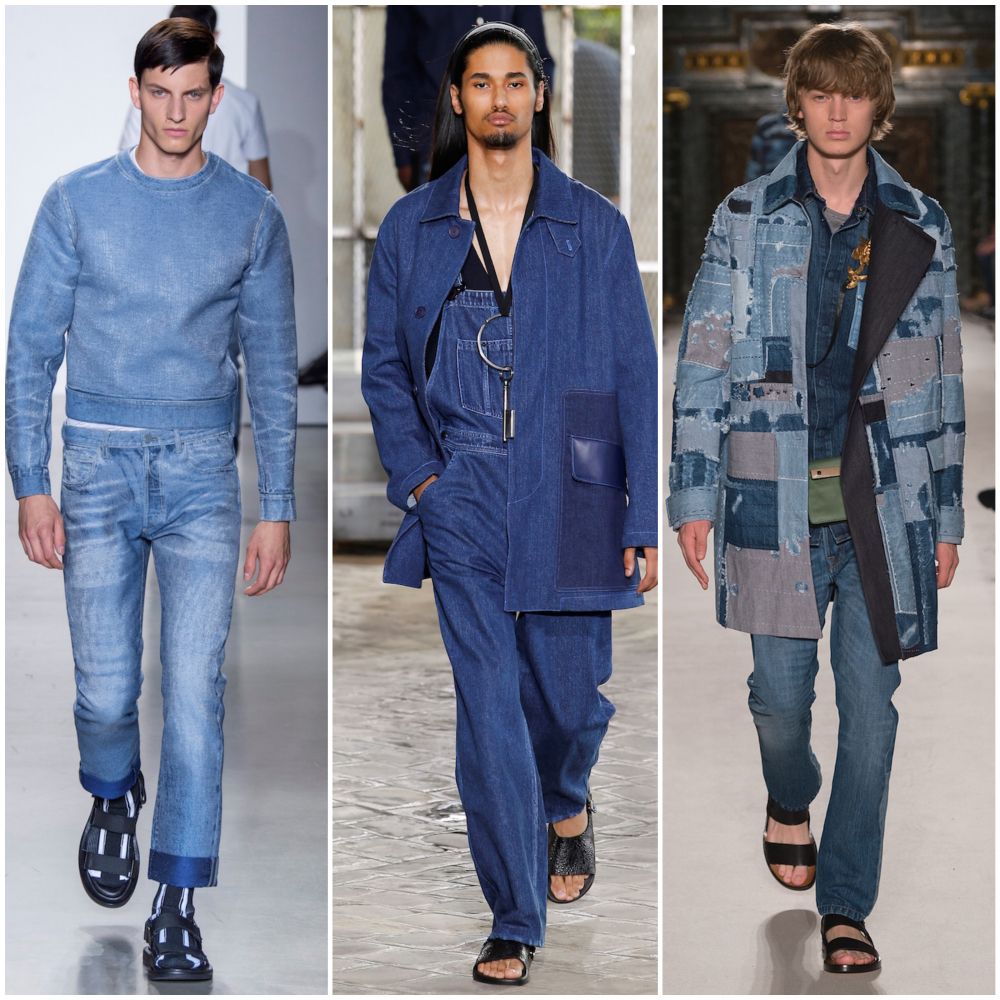
The youthful, stylish, favourite of all fabrics stands witness to many changes to become today’s denim. From a worker’s uniform to a symbol of youth rebellion and a fashion statement-- denim stays fashion’s favourite through the ages. Even in 2016, denim continues to be a major contributor in world fashion, making headlines with new trends and styling. In today’s varied denim jeans market, there is a wide range of styles on offer for New Age consumers, – from classic boot-cuts and bell-bottoms, to ‘boyfriend’ and ‘mom’ jeans. Zayan Ghandour, Co-founder and Creative Director of S*uce concept stores in the UAE, says: “Denim has always been a staple in every wardrobe – especially denim trousers, of which every woman owns between one and 10 different washes and cuts”.
Denim an expression of personal style
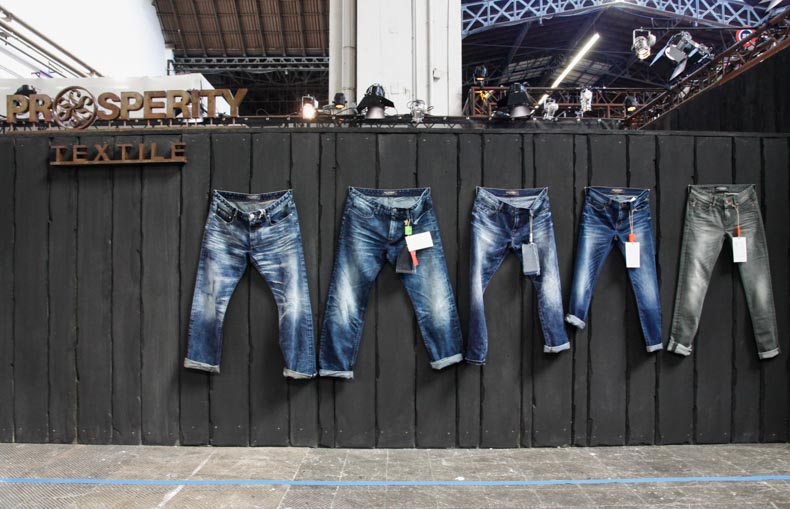
Gone are the days when the standard denim was five pockets and indigo dyed. Today, it has become lighter and more stylish, innovative to be a part of casual wear as well as semi formalwear. The idea of artistically revamping denim isn’t entirely new. Art competition held by Levis Strauss revealed as many as 2,000 entries which suggested that even in 1973, Americans loved decorating their own jeans. The brand showed that Levi’s jeans had evolved to become canvases for personal expression. While it talks of a DIY trend on their jeans at home, today there is a wide range of expressive denims readily available on the high-end market. The new season of denim, thus , seems to be a personal style segment, atleast in the designer category. From Stella McCartney’s new season gold polka dot and embroidered wildcat jeans, retailing at up to Dh2,500, to the Ashish’s sequinned pair costing about Dh7,800, denim is becoming more of a personal style statement with innovation and styling. The trends will get bigger in 2016.
In their campaign, Ghandour features denim dresses, blouses, skirts and kaftans decorated with colourful embroidery – all rose bouquets intertwined with hummingbirds. While the base is a typical blue-jean shade, embellishments are dainty and romantic, giving a playful vibe to the jazzed-up denims. “We wanted to introduce a line of denim that included fashion pieces rather than basic staple items,” says Ghandour. She adds that the addition of lace and embroidered elements elevated the pieces from basics to “must-haves” and claims that denim can no longer be confined to casual wear. For spring/summer 2015, the collection from Chloé combined femininity with utilitarian and prairie influences. Three of the looks were completely made up of denim: a detailed minidress, a poncho and jogger ensemble, and a button-down maxi skirt with a relaxed crew-neck sweater. Gucci’s spring/summer runway show also incorporated a great deal of denim, from cropped wide-leg jeans to panelled dresses that mixed different shades of denim with textured eyelets. at Karen Walker, retro silhouettes were produced in baby-blue denims, and at Acne, the fabric was dyed in shades of indigo and purple before being pieced together in an eclectic patchwork manner.
Athleisure to remain strong
Athleisure, the trend that’s added leggings and sneakers to everyday
wardrobes, has now emerged into a full-fledged category at the intersection of activewear and traditional sportswear. While the category has taken a meteoric rise, it has also threatened its main competitor in the casualwear category, denim. At the Women’s Innovation Summit last year, Nike CEO Mark Parker announced, “Leggings are the new denim.” But jeans have fought back and found a way to incorporate comfort with elements like extra stretch, knit denim fabrications and sweatpants styling. Jeans as a category are not dead but they have done a good job of redefining themselves or reimagining their product in light of athleisure trends.”
Athleisure trend would be a strong trend as companies focuses on bringing out products to cater to this trend. Referring to the trends from 4th Denimsandjeans.com Bangladesh show, Sportswear and Activewear aspects of denim were prime focus as companies from Brazil, Bangladesh, Pakistan, India, Turkey etc brought out fabrics with upto 100 per cent stretchability and high recoveries. As part of Athleisure, strong fibers were also used in the fabrics like Dyneema fibers- to give that rough and tough character to denim for action sportswear. Hence denim goes lighter and lighter to match with the new categories. Subtle and smooth feel with satin weaves and play of Tencel, modals, rayon, linen and other fibers were extensively used to create the high end denims for females as well as for males sometimes. Dobbies and jacquards weaves to create new designs and accentuating their effects
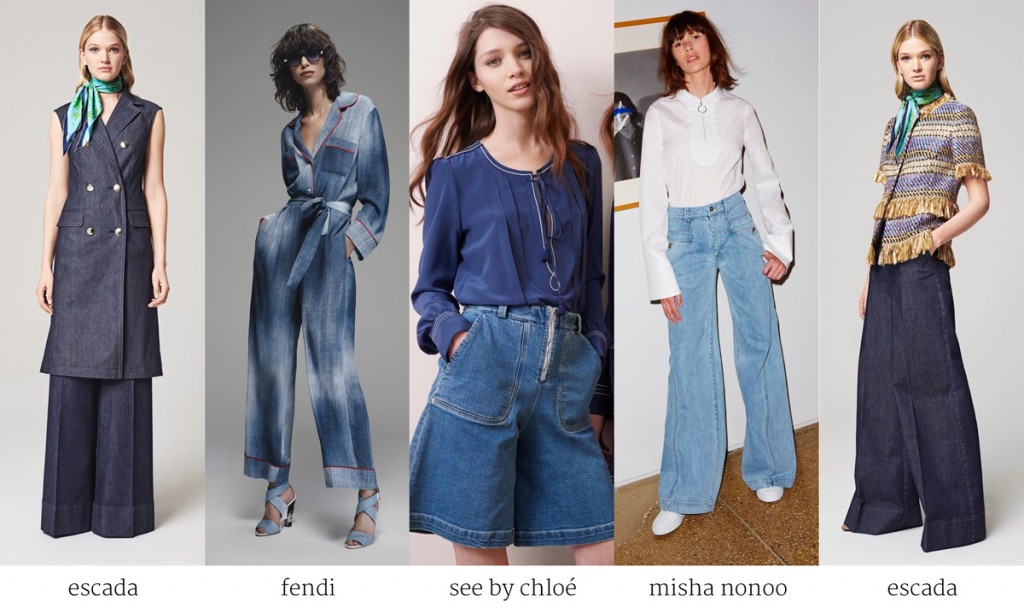
with washing
Innovation add dynamisms to market
As a result of Athleisure influence and changing styles, there has been
much innovation to create contemporary structures and finishes. Marcus Boson, The Blue Uniform Designer, says “the company has always used stretch, but it has been more about their ongoing dedication to comfort than a dedication to trend. Their emphasis is on timeless fashion, and their main concern is that their customers are comfortable, whether they are sitting in front of their computer or on the move.” Boson believes, however, that the fitness and health trends will continue, so something similar to athleisure will endure in future. As competition increases brand are now Capitalizing on new innovations.
Brands like Denimocracy created a capsule collection of knit pants with a variety of wash treatments, including coating, foil and mineral washes. The knit line complements their premium denim, maintaining the look of denim with the stretch and comfort of a legging. The trends follow across the globe. Turkish brand Mavi’s collection for Fall/Winter 2014 used a new ‘sporty’ fabric, which is actually a French terry. The fabric in fashion silhouettes and combined knit with an indigo yarn, which gave the look of a true jean in authentic-looking denim washes. The brand has joggers by using more premium French terry fabrics to allow the customer to experience the fabric in a tried and true fit they love.
70’s retro will inspire Fall/Winter 2016
70’s chic denim, a women’s wear trend that breathes new life into retro denim styles to create 70’s-inspired pieces with a clean, contemporary appeal will continue to be big in 2016. Already a big trend in 2015, ’70s-inspired designs will remain a touchstone in the new year, with designers drawing from the bygone decade with wider flared jeans, culottes, and denim skirts, which Polyvore recently named as one of their most-searched items of 2015.
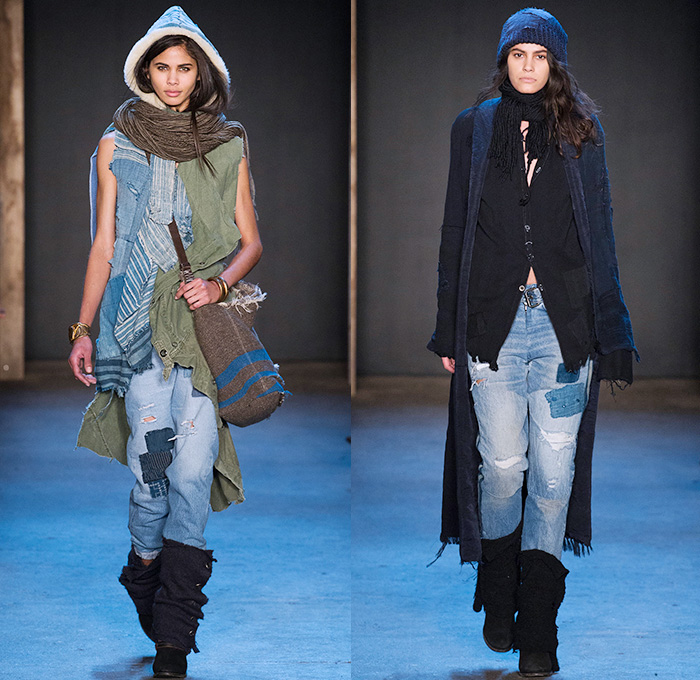
“I’ve got all inspiration from ’70s silhouettes and washes,” said Katie Kim, Hidden Jeans designer. “Very calm, clean medium blue tone, but with a hint of great detail such as frayed hems, embroidery and hidden zippers. I’m focusing on wide legs, culottes, and flares with great ’70s detail.” “San Francisco has so much inspiration when it comes to the ’70s,” said Amie Gains, designer at Level 99. “Naturally I love to check out the vintage shops that hold a true ’70s flare, from the vintage 501 Levi’s to the old Maverick, Lee, Jordache, and vintage suede jackets. Denim skirts are also coming back in all shapes and lengths from slim fitted long skirts, to A-line silhouettes.”
Women’s denim replete with tonal patchwork, flat finish
This year women’s denim introduces a 70’s mood with striking patchwork prints, executed in tonal denim blue shades. Clean lines enhance simple cuts, as seen in the form of cropped culottes and flared jeans. Meanwhile, more casual DIY looks can be created with pieced-together materials and raw edgings. Double-denim coordinations make a contemporary statement when formal jackets are styled with jeans. In Fall/Winter denim , flat finish emerges with anti-treatment finishes and clean-cut designs. Purist shapes lend a chic appeal, from A-line mini dresses to longline coats. Wide-leg dungarees can be layered over a tactile roll-neck knit for a cozy winter 70’s look, as high-waist silhouettes and shirt collar details emphasize the modern-retro feel.
Distressed woos customers
Of late distressed jeans have become increasingly in vogue as well. They have even made a startling entry into high fashion, which is particularly surprising given the rumpled and ragged appearance of distressed jeans, and contrasting posh nature of the orthodox fashion industry. The luxury segment in markets like Abu Dhabi offering cutting-edge styles from international brands such as Jonathan Simkhai, Prabal Gurung and Markus Lupfer. Founder Lina Mustafa launched a dedicated in-store denim-distressing station, where customers can bring in their denim pieces and have them customised. “We started this because I’ve found that it’s very difficult to find perfectly distressed jeans according to exactly how you want them,” Mustafa says.
Changing with time and to compete with newer categories like knitted sportswear and active wear, denim makers have introduced new techniques to keep up with the changing wardrobe requirements of today. In today’s internet savvy world, information and exposure flows everywhere, making fashion highly competitive. While consumers are continuously looking for innovation, denim makers are also working relentlessly to introduce new trends and technology to keep their market share. In continuation with the prevailing trends of last year, 2016 will see a more focused approach of denim makers to be ahead of the game in terms of design and product innovation.
Small handloom and textile manufacturers say that the amended Technology Upgradation Fund Scheme has benefitted only big corporate houses. The amended scheme has been recently approved in place of existing Revised Restructured Technology Upgradation Fund Scheme for technology upgrade.
TUFS had played a pivotal role in the uplift of local industry, but now the subsidy for the handloom sector has been reduced to 15 per cent from 30 per cent. This means, subsidy will now be given on the purchase of machinery worth Rs 30 crores, while earlier it was given on the purchase of machinery worth Rs 1.5 crores.
Small manufacturers say TUFS was introduced to benefit them but now even big manufacturers will be able to benefit from the scheme. The Technology Upgradation Fund Scheme was introduced in 1999 to facilitate new and appropriate technology for making the textile industry globally competitive and to reduce the capital cost for the textile industry.
Under the amended TUFS, the government has made a fresh allocation of Rs 5,151 crores as a one time capital subsidy for new investment in addition to a marginal increase on limited liability to the tune of Rs 3,381 crores for the next five years.



